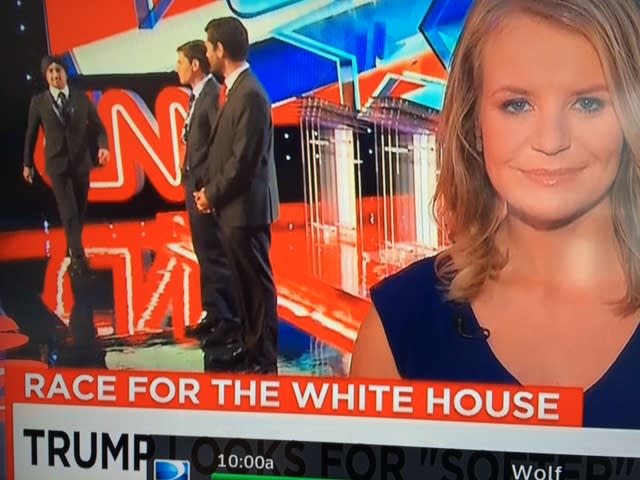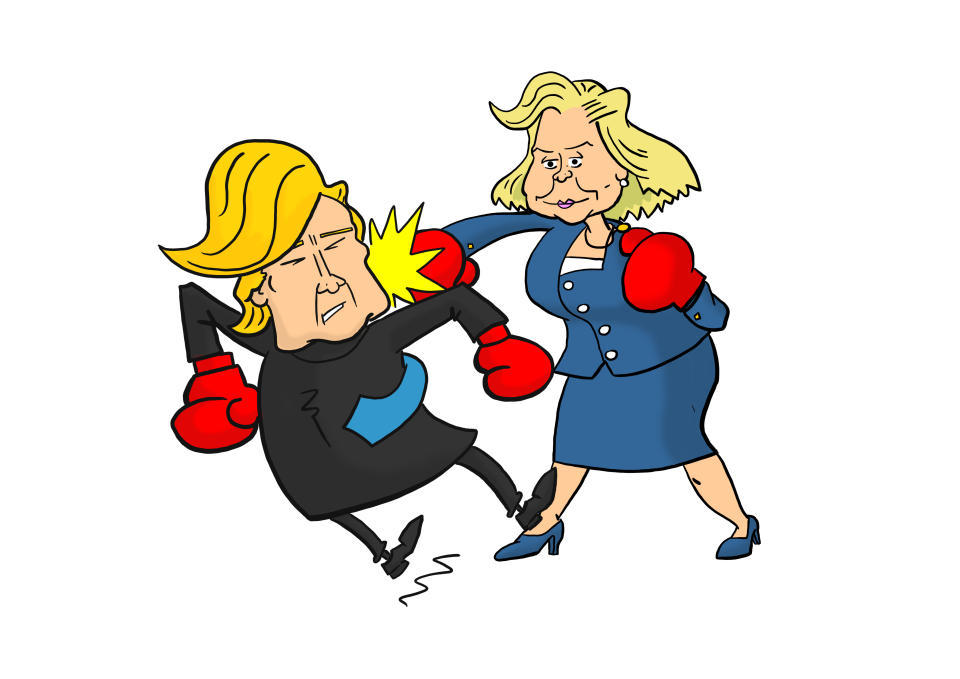TV’s Political Ad Sales Prospects Remain Unclear As Primaries Enter Home Stretch

Political pundits say that Donald Trump’s and Hillary Clinton’s impressive victories in Tuesday’s primaries in New York helped to clarify who will win the Republican and Democratic presidential nominations. But they offered little useful guidance for TV stations and cable providers grappling with an unusual problem this election year: They still don’t know how much candidates and interest groups will spend or where they’ll spend it.
TV’s take could be huge if there’s a hard-fought presidential battle, perhaps with a third party, involving candidates without coattails — which might lead activist groups and local candidates to spend heavily.
But in other scenarios, this year could be a bust compared with expectations. If contested primaries run to June, then candidates might drain their war chests on multiple media in a handful of states — leaving them with less for the fall when TV becomes more important.
“The longer this primary unfolds, the lower the total for TV ad spending on the presidential election will be,” says Elizabeth Wilner, Kantar Media’s SVP Political Advertising.
Others wonder what will happen if, say, Trump beats Ted Cruz and John Kasich to become the GOP candidate and continues to depend on free and social media. Or if Clinton beats Bernie Sanders for the Democratic nod and heads toward a blowout, reducing the number of battleground states.
“Then the windfall goes away,” says Leo Kivijarv, EVP at media research and consulting firm PQ Media.
Forecasters have different views of the potential market.
Kantar predicted that $4.4 billion in total local and national political TV spending, a slight increase over 2012 — the last year with a presidential race. PQ Media was a little higher, at $4.5 billion, with 90% going to broadcasters and 10% to cable. But Borrell Associates expected broadcast and cable TV to see about $7 billion, with about 17% going to cable.
Those selling TV ads say they’re still bullish.
“I don’t think the money is going away,” says Steve Lanzano, CEO of the Television Bureau of Advertising which represents stations. “There’s a lot of anti-Trump spending out there. Now he’s got a new team [of advisers] in place. Are they going to change his approach? And Hilary Clinton’s got a big war chest that she’s very willing to let go.”
Cable operators also are optimistic — both about the level of spending, and their share of the pie.
During the past 15 weeks, political buys accounted for 11.1% of all ads sold by rep firm Viamedia, which works with multiple operators, according to CEO Mark Lieberman (no relation). That contrasts with 2012 when political represented 5.1% of sales over the same period.
Sales could soar if the GOP has a dramatic contested convention in July, with news networks offering gavel-to-gavel coverage.
If that happens, then ratings “will be through the roof,” Lieberman says. “That will be good for us in the cable political advertising business.”
Fox News accounted for 25.6% of the political sales Viamedia saw in Q1. It was followed by ESPN (11.4%), CNN (11%), HGTV (6.6%), USA (6%), TNT (5.4%), History (4.2%), TBS (4.2%), and MSNBC (3.9%).
Since most political buys are made locally, sellers are especially interested in where biggest battles will take place.
Wilner says that 10 states saw the vast majority of spending in 2012. In a Trump vs. Clinton race, the GOP might look to put Michigan and Minnesota in play, while Democrats do the same in Arizona, Georgia and Missouri.
If Trump doesn’t have coattails, or proves to be a divisive candidate, then Republicans might have to spend more to protect Senate and House seats that they had considered safe.
“It spreads the wealth a little bit,” Wilner says.
PQ’s Kivijarv also believes that if Trump is the nominee then “a lot of races [Republicans] considered safe won’t be so safe.”
PQ believes that Colorado, Florida, Ohio and Virginia will continue to be toss-ups in the presidential race. Democrats have a slight edge in New Hampshire and Wisconsin, while Republicans have an edge in North Carolina.
But a third of the 33 Senate races are up for grabs: Florida, Nevada and Wisconsin are toss-ups. Illinois tilts Democratic, while New Hampshire and Pennsylvania tilt Republican. And Colorado leans Democratic, but still is vulnerable, while Republicans face similar odds in Arizona, North Carolina and Ohio.
What happens if the Republican Party is split, leading a faction to support a third-party candidate?
“It’s a big X factor,” Wilner says. “But it depends on who the candidate is. If the three-way includes Trump and a conservative Republican, the battlefield isn’t that much bigger.”
Related stories
CNN Wins New York Primary Ratings In Demo, Fox News Takes Overall Audience
New York Primary: Empire State Building Turns Red Over Trump, Blue For Hillary - UPDATE
Stephen Colbert Teaches Hillary Clinton About Cheesecake As New Showrunner Debuts
Get more from Deadline.com: Follow us on Twitter, Facebook, Newsletter


